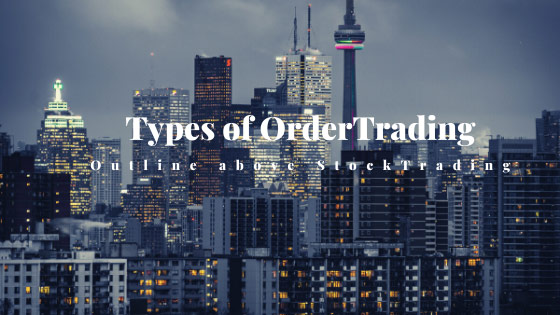If you have ever tried online stock trading, then you must have heard the word – Trade Order. A trade order is an instruction given by a user in the stock market to execute a course of action. The actions can be selling, buying, squaring-off, delivery, or any other commitment.
An order is of different types, and having some basic knowledge of them is a must for any trader. It can even cost your precious bucks if you do not pay attention to the different types of orders.
Here in this article, we would discuss some famous and widely used market orders. Follow us through this short but sweet journey!
Types of Trade Order
Trade Order: Market Order
A market order allows a trade to immediately buy or sell the stock or asset at the current market price. It is an order type that executes a business at the present price level, and the user doesn’t have any control over ask or bid price.
It might happen that you don’t get the order at the price you saw and get it at some other price because of price fluctuation. However, the price change will be near the last traded price. It usually happens with volatile stocks.
In other words, this order type does not guarantee the number of assets but assures the buy/sell of stock.
It is a useful tool for intraday traders, who want to execute a trade without any further delay. Moreover, the tables can turn around too if the stock’s volume is less and the price fluctuation is tight.
Trade Order: Limit Order
Another prevalent trade type is – Limit order. It allows a user to execute a trade at the desired price. For instance, the stock is trading at $10, and you want to buy it at $9, then you can place a limit order here.
Also, till the time you’re order is not executed, it would be in an open position in the online stock trading market. Once, the price reaches your desired level, the order fills. However, if it doesn’t touch your price point, then at the closing, your order would be canceled.
It protects a trader from purchasing or selling the asset at low prices due to fluctuations.
The limit order tool is applicable for both buy and sell situations too and can be used accordingly.
Trade Order: Stop Order
The stop-loss order is an excellent tool for traders to avoid high losses. It allows a user to execute a trade at a preset price.
If a trader feels that the asset’s price below a certain level is not worthy, then he places a stop loss at that price.
For example, you buy the shares of XYZ Ltd. at $100 and set a stop loss at $85. Now, if the price touches the $85 mark anytime, then your asset would be sold automatically.
However, the simple stop order will sell your asset only at a special price; anything above or below that is of no use. There are further two types of stop-loss orders, i.e. trailing stop loss and stop-limit order.
Remember, a trader should never place the stop loss near the current level prices because any change in price will sell your stock. Also, avoid too volatile stocks here.
Trade Order: After Market Order
AMO or aftermarket order is a tool that allows users to execute trade even after working hours. For instance, the UK stock market will enable traders to buy and sell assets from 08:00 A.M. to 04:30 P.M.
Most reputed traders allow this order type but with certain conditions. The conditions might include time flexibility or extra charges, and vary from broker to broker.
It is a widely used tool by experienced traders, who are aware of the course of actions and predictions very well.
So, these were the order types which a beginner trader must know during online stock trading. There are a plethora of different order types apart from the above ones.
However, these were the most common, widely-used, and straightforward ones.
The Bottom Line
An order type might not be much valuable for a long-term investor. But, if you are even thinking of being a day trader, then this is the first thing to know.
It can boost your profits or put you at losses. Thus, it is essential to know the difference between each order type and act accordingly.
By doing so, you will know what works best at what time and how it affects your trade and portfolio. Most importantly, you would be able to manage your time, stress, risk, and last but surely not least, money.


